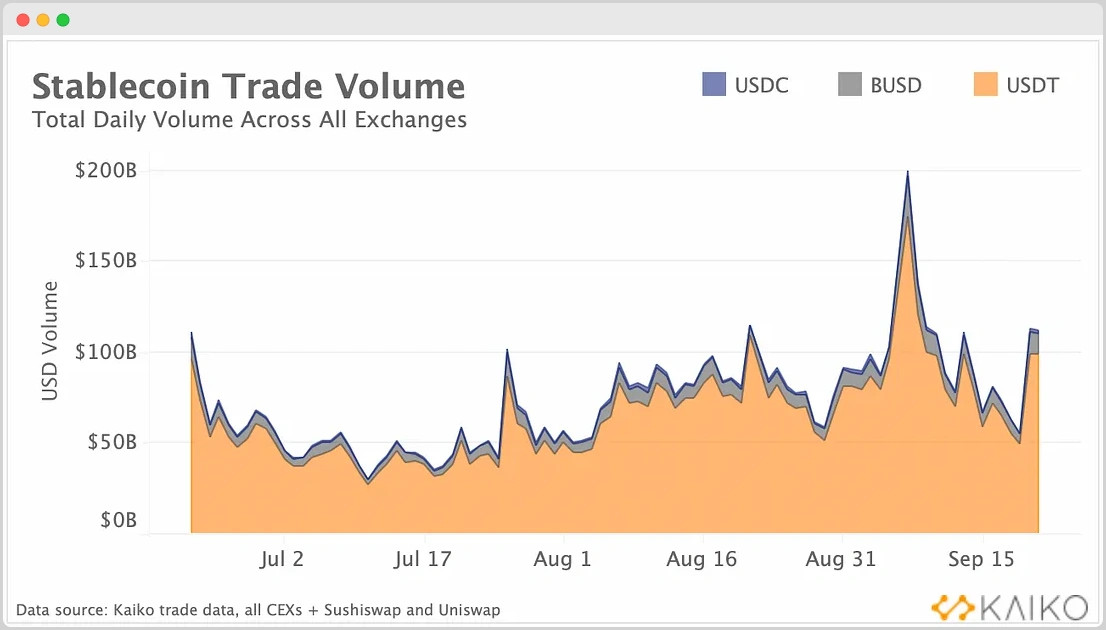What is a Stablecoin?
What is stablecoin? Stablecoins have emerged as a crucial innovation in the cryptocurrency space. They are digital currencies that aim to maintain a stable value.
Its often by being pegged to traditional assets such as fiat currencies or commodities—making them a practical alternative to highly volatile cryptocurrencies like Bitcoin.
In this article, let’s breakdown the stablecoins are, discuss why they are important, explore various types of stablecoins available in today’s market, and outline how they work.
Key Takeaways:
ShowWhat Are Stablecoins?
Stablecoins are a class of cryptocurrencies designed to limit the extreme volatility seen in many digital assets.
To understand their value proposition, consider that a stablecoin is generally pegged to a “stable” asset—often a fiat currency such as the U.S. dollar or a commodity like gold.
This peg dramatically reduces price swings relative to unpegged cryptocurrencies. However, stablecoins have become popular for several reasons:
- They enable day-to-day transactions by providing price stability.
- They function as safe havens in times of market turbulence.
- They are widely used for transferring funds between exchanges and across borders.
1. The Core Principles
- Purpose: By reducing volatility, stablecoins help bridge the gap between traditional finance and the decentralized world.
- Key Idea: Their peg to assets like the U.S. dollar offers users a familiar store of value while retaining the flexibility, speed, and security of blockchain technology.
2. The Role of Stability
The core appeal of stablecoins lies in their promise to offer stability similar to traditional cash.
While cryptocurrencies like Bitcoin can experience dramatic price shifts, stablecoins maintain a relatively steady value. This makes them ideal for:
- Daily transactions (buying goods, paying bills)
- Facilitating remittances
- Acting as a safe harbor when the broader crypto market is in turmoil
Why Are Stablecoins Important?

Stablecoins have grown in popularity because they address some of the fundamental limitations of traditional cryptocurrencies.
They offer the advantages of decentralized digital currencies while overcoming the barrier of price instability.
1. Enhancing Everyday Use of Crypto
- Reducing Volatility: Stablecoins remain steady in value. Their design minimizes risk during transactions, so you won’t end up overpaying or under-receiving in everyday purchases.
- Promoting Adoption: Because users can depend on a stable store of value, stablecoins make crypto accessible for both retail transactions and institutional trading.
2. Bridging Traditional and Digital Finance
- Financial Inclusivity: What is stablecoin brings together the best of both worlds. They offer fiat currency’s reliability along with the innovation of digital assets.
- Efficient Transfers: Cross-border payments using stablecoins can be fast, efficient, and low-cost compared to traditional financial systems.
- Trading Flexibility: Traders often use stablecoins as a reliable medium to park funds in periods of high market volatility while still staying within the crypto ecosystem.
3. Supporting Decentralized Finance (DeFi)
Understanding what is stablecoin reveals that stablecoins are at the heart of many DeFi applications:
- They enable collateralized lending and borrowing.
- They serve as the base asset for decentralized exchanges.
- They are critical to yield farming and other investment strategies within DeFi.
What Can You Do With Stablecoins?
Stablecoins have a wide range of practical applications in today’s financial ecosystem.
Their stability and ease of use make them attractive for numerous use cases that benefit both individuals and institutions.
1. Facilitating Everyday Transactions
- Currency for Daily Purchases: Stablecoins can be used like fiat money to buy goods and services without the risk of dramatic price fluctuations.
- Avoiding Conversion Hassles: Using stablecoins, consumers can bypass the need to repeatedly convert between fiat and volatile cryptocurrencies.
2. Enhancing Trading and Investment Strategies
- Safe-Haven Asset: When crypto markets are turbulent, traders shift their holdings to stablecoins to protect their portfolio value.
- Efficient Trading Pair: Instead of converting assets to traditional currencies, traders use stablecoins as an intermediate step to capture market moves quickly.
- What Is Volume? Although the focus here is on stablecoins, understanding what is volume remains important in any market—it acts as a useful signal of market participation and trading interest.
3. Streamlining Global Money Transfers
- Lower Transaction Costs: Stablecoins can drastically reduce fees compared to international wire transfers or traditional remittance services.
- Speed and Accessibility: They allow for near-instant settlement of cross-border payments without the delays associated with legacy systems.
- Inclusion for the Unbanked: Stablecoins provide a way for people in countries with unstable local currencies or limited banking infrastructure to participate in the global economy.
4. Earning Rewards and Yield Generation
- Interest-Earning Platforms: Many platforms offer interest on stablecoin deposits, providing an alternative to traditional savings accounts.
- Liquidity Provision: By lending stablecoins on DeFi protocols, users can earn returns while supplying liquidity to the decentralized market.
How Do Stablecoins Work?
Stablecoins work by pegging their value to an external asset or by using algorithms to control supply and demand.
Different approaches create a variety of stablecoin types, each with its own method to achieve stability.
1. Fiat-Collateralized Stablecoins
In exploring what is stablecoin, fiat-backed stablecoins maintain a reserve of a fiat currency (like the U.S. dollar) that is equal to the number of stablecoins in circulation.
- How They Work:
- A stablecoin issuer holds real fiat currency in a bank account.
- For every stablecoin issued, there is an equivalent amount in fiat held as collateral.
- Regular audits or attestations ensure transparency.
- Example: USD Coin (USDC) is backed by dollar reserves, which helps it maintain a 1:1 peg with the U.S. dollar.
2. Commodity-Collateralized Stablecoins
So, what is stablecoin? These stablecoins are pegged to commodities like gold or silver.
- How They Work:
- The issuer holds physical assets (e.g., gold bars) in reserve.
- The stablecoin’s value directly reflects the underlying commodity’s value.
- Benefits and Risks:
- They can offer a hedge against inflation.
- Their stability depends on the commodity’s market price and storage security.
3. Crypto-Collateralized Stablecoins
When considering what is stablecoin, crypto-backed stablecoins are supported by other cryptocurrencies rather than fiat currencies.
- Mechanism:
- They are often overcollateralized to account for the inherent volatility in crypto markets.
- For example, issuing $1 in a stablecoin might require holding $1.5 or $2 worth of another cryptocurrency as collateral.
- Example: MakerDAO’s Dai is backed by Ethereum and other cryptocurrencies, using smart contracts for overcollateralization.
4. Algorithmic Stablecoins
Unlike collateralized stablecoins, algorithmic stablecoins are not backed by physical or digital collateral.
Instead, they use algorithms and smart contracts to control the stablecoin’s supply.
- How They Work:
- If the stablecoin’s price rises above its peg, the algorithm increases the supply.
- If the price falls, the system reduces the supply by “burning” tokens.
- Challenges:
- These stablecoins have a higher risk of “depegging” if the algorithm fails to adjust supply in time, as was the case with TerraUSD (UST).
Applications and Challenges of Stablecoins

While stablecoins offer considerable benefits, they also come with potential risks and challenges that require careful consideration by users and regulators alike.
1. Applications
- Digital Payments: Stablecoins offer a reliable means of payment with low transaction fees and fast settlements.
- Trading Hub: They serve as intermediaries for cryptocurrency trading and as a gateway to the DeFi ecosystem.
- Remittances: Lower fees and faster processing times make them ideal for transferring value across borders.
- Yield Generation: Platforms offer attractive interest rates on stablecoin deposits, making them a versatile tool for earning passive income.
2. Challenges
- Centralization Risks: Fiat-collateralized stablecoins are managed by centralized entities, which creates potential single points of failure.
- Regulatory Scrutiny: Governments are increasingly focused on ensuring stablecoin issuers maintain sufficient reserves and adhere to strict audits.
- Depegging Risks: Any failure in maintaining the peg—whether through mismanagement, insufficient reserves, or algorithmic shortcomings—could render a stablecoin unstable and unusable.
- Market Manipulation: With stablecoins being integral to many trading and remittance systems, any breach in transparency may invite market manipulation.
Stablecoin Regulation and Future Trends

The rapid growth of the stablecoin market, now valued in the hundreds of billions of dollars, has prompted regulators worldwide to step in.
1. Regulatory Environment
- Global Scrutiny: Regulatory bodies in the U.S., Europe, and Asia are focused on ensuring stablecoin issuers are transparent and adequately backed by reserves.
- New Frameworks: For example, the International Organization of Securities Commissions (IOSCO) has proposed treating systemically important stablecoins like critical financial market infrastructure, similar to payment systems and clearinghouses.
- Proposals for Oversight: In the United States, lawmakers have suggested that stablecoin issuers undergo regular audits, provide full transparency of reserves, and abide by strict regulatory oversight similar to banks.
2. Future Trends and Innovations
- Interoperability: As stablecoins expand across different blockchain platforms, interoperability will become key in fostering a connected global payment ecosystem.
- Improved Transparency: We can expect more stringent regulations and technological innovations that ensure real-time transparency on reserve holdings.
- Expanding Use Cases: The use of stablecoins is likely to grow beyond trading and payments, powering new forms of decentralized finance, lending, and remittance services.
- Adoption by Institutions: With increasing trust and transparency, more financial institutions are expected to integrate stablecoins into their services, potentially making them part of everyday transactions.
Final Word
Despite risks like centralization, regulatory scrutiny, and depegging, stablecoins offer low fees, fast cross-border payments, and greater access for the unbanked, driving adoption.
With evolving regulations and innovations enhancing transparency and interoperability, they are set to shape the future of global finance.
Stablecoins have emerged as a vital tool for bridging the divide between traditional finance and the fast-paced world of cryptocurrencies.
In fact, if you ask “what is stablecoin?” you’ll learn that these digital assets are designed to provide the stability of fiat currencies while harnessing the speed, security, and global reach of blockchain technology.
Frequently Asked Questions (FAQs)
Is USDT a stablecoin?
Yes, USDT (Tether) is a stablecoin that aims to maintain a 1:1 peg with the U.S. dollar through various reserves.
Does XRP have a stablecoin?
No, XRP is a digital asset used mainly for cross-border payments and liquidity, and it is not designed or classified as a stablecoin.
Many consider USDC as one of the safest stablecoins due to its regulatory oversight, audited reserves, and transparency, although safety ultimately depends on specific user needs and risk considerations.
Which is the best stablecoin?
The best stablecoin is subjective and depends on factors like transparency, regulatory compliance, and use case. Popular choices include USDC for its regulatory backing and transparency, and USDT for its wide adoption.

